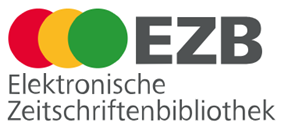Vegetative Cell Division and Nuclear Translocation in Three Algae Species of Netrium (Zygnematales, Chlorophyta)
Abstract
Three species of Netrium oblongum, N. digitus v. latum, and N. interruptum were studied for their mode in the vegetative cell division and nuclear translocation during mitosis using light and fluorescence microscopy. The process of cell division in the three species began with the prominent constriction at the chloroplast in both semicells about half way from the apex. The constriction of chloroplast was mostly visible in N. digitus v. latum. Soon after nucleus divided, septum was formed across the cell and cytokinesis occurred. Observation with fluorescence microscope showed that the movement of nucleus moved back into the center of daughter cells was not always synchronous. Division of chloroplast in N. oblongum and N. digitus v. latum were different with that of N. interruptum. Chloroplast division in two former species occured following the movement of the nucleus down semicell. However, in N. interruptum, chloroplast divided later after nucleus occupied the position at the center of the daughter cells. Cell restoration started after the completion of mitosis and cytokinesis.Key words: Cell division, conjugating alga, mitosis, Netrium
Downloads
HAYATI J Biosci is an open access journal and the article's license is CC-BY-NC. This license lets others distribute, remix, tweak, and build upon author's work, as long as they credit the original creation. Authors retain copyright and grant the journal/publisher non exclusive publishing rights with the work simultaneously licensed under a https://creativecommons.org/


















.png) IPB University
IPB University Department of Biology
Department of Biology The Indonesian Biological Society
The Indonesian Biological Society 

